The Canon Sureshot A1 – This is the perfect camera to ride the retro wave, and make a splash at the beach or pool during the summer. It’s a fully automatic 35mm camera – fixed 32mm f/3.5 Lens – Auto ISO, Auto Exposure, Auto Focus It has an active 3-point AiAF system (fixed focus under water), with a focusing range: 0.45m to infinity on land; 1m to 3m (macro: 0.45 to 1m) under water. It has an easy-to-see, real-image ‘Big’ Viewfinder, and is water resistant to a depth of 5m.
It has built-in flash, which can be run in full Auto mode, or always ON, or disabled – and the camera runs off of a single 3V lithium battery (CR 123 A/DL 123A).
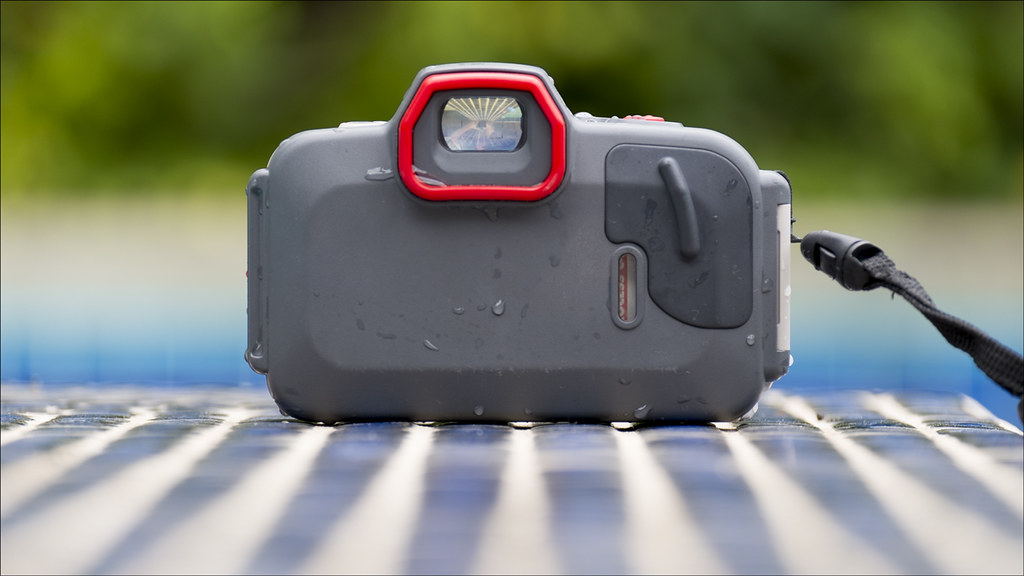
The rear of the Canon Sureshot A1 features a ‘big’ easy to use viewfinder, which has bright line frames and adjusted frame-lines for close focus/parallax correction, and a simple film canister window, so you can see what film is currently loaded.
All of the controls are big and easy to use – I guess so that you can operate them easy while wet or under water – with the top plate having a large red shutter release, and a smaller reassessed self-timer button.
You also get a simple frame counter – which will also indicate when the film has finished, and been automatically rewound back into the film canister (a nice feature).
The battery compartment is accessed from below – and is sealed with a marine rubber gasket to keep the water at bay.
You also get a tripod thread (which seems to be plastic, so may not take much abuse).
Film loading is very easy, you crack open the sealed camera body with a big red locking release tab – and insert the film into the right hand slot. Pull the leader to the left up to the indicated line, and close the back – the camera does the rest, with a fully automated wind-on.
While the camera is open – check the red rubber marine seals to make sure they are clean and undamaged – you can apply a little silicon seal lube to keep the supple – and you must ensure they stay free of grit or hairs, as one grain of sand could cause a fatal flooding of the camera!
My A1 came from EBAY for $20 – and appeared to be as new – with minimal use – the seals were in great looking shape, but it was still a nerve-wracking moment when the camera was immersed for the first time!.
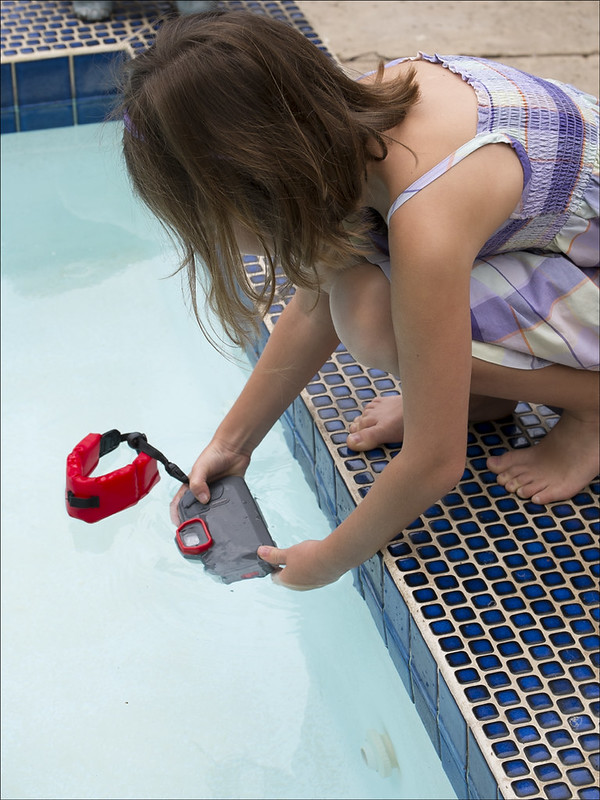
Operation is very simple – there is a big dial on the front that you switch to AUTO, and away you go.
You get a solid green LED in the viewfinder when the camera locks AF and is ready to shoot – no LED and you may be too close for the AF – flashing LED may indicate you need flash as the shutter speed is too low.
Given the simple operation of the Canon Sureshot A1 – I threw in some XP2, and handed the camera to the ‘kids’ in the pool for July 4th – while I retreated to a safe distance with a G&T 😀
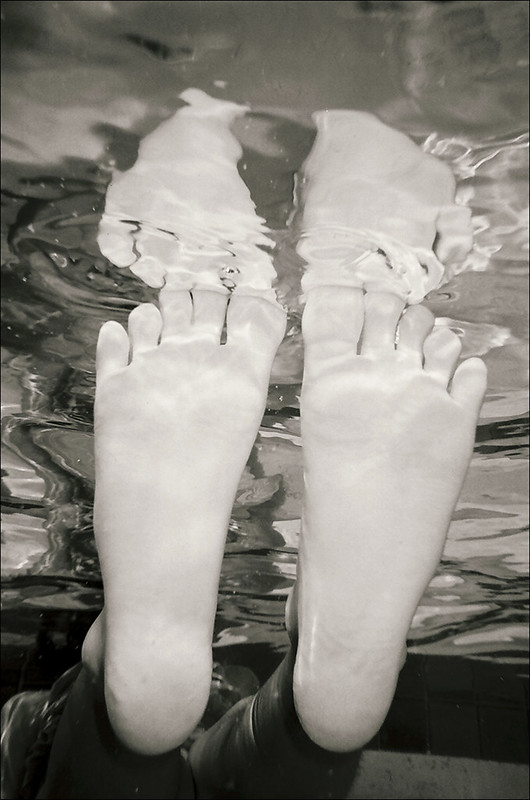
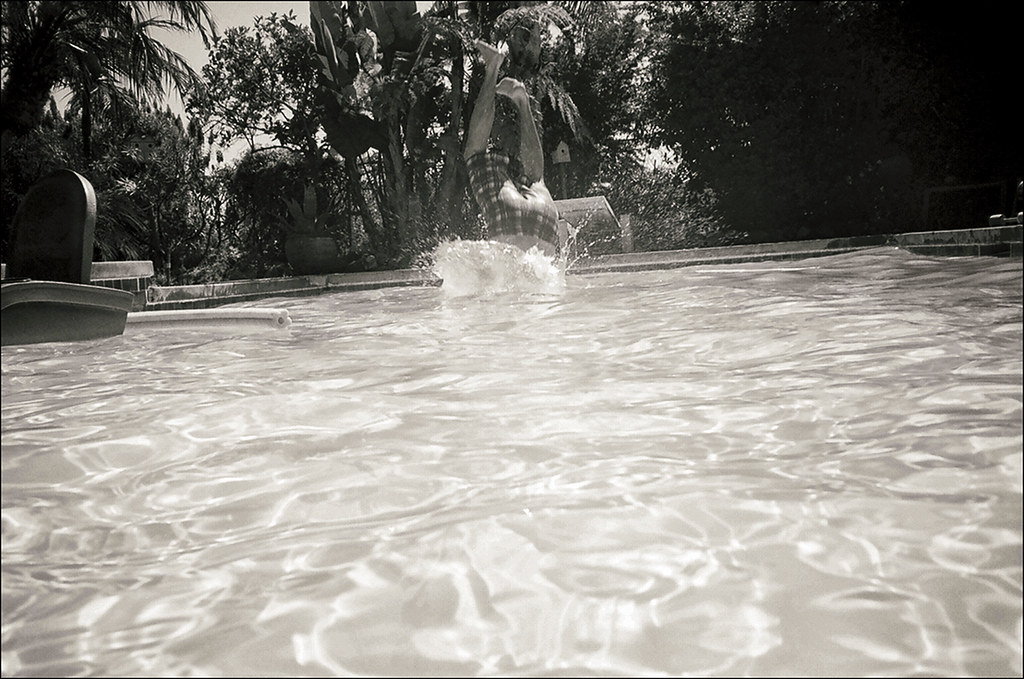
The Canon Sureshot A1 passed it’s test with flying colors (or at least mono-tones) – it was water-tight, actually floated (even without the float lanyard I had found on EBAY) – and got some great shots.
The parallax error did catch people out – but then again, I didn’t explain what the lines in the viewfinder were for! [doh]
Of course, the Canon Sureshot A1 works just like a normal point and shoot out of water – and is ideally suited for the British summer, or a ride on a splash/soak ride at the theme park, or a kayaking holiday etc etc.
No worries about heading to the beach or walking about in torrential rain – Canon Sureshot A1 just laughs at the elements.
It takes a decent picture as well – just remember to clean the glass in front of the lens before you start shooting out of water. Water droplets make for blurry images (as me how I know 😮 )
It’s a barrel of fun to use – simple and easy to get a decent photo from, and cheap as chips compared to the modern digital waterproof cameras on the market.
You do have to use print film (not slide film) if you plan any underwater photography – but other than that it’s about as point and shoot as you can get.
It will be getting further abuse during the summer I’m sure 🙂
Share this post:
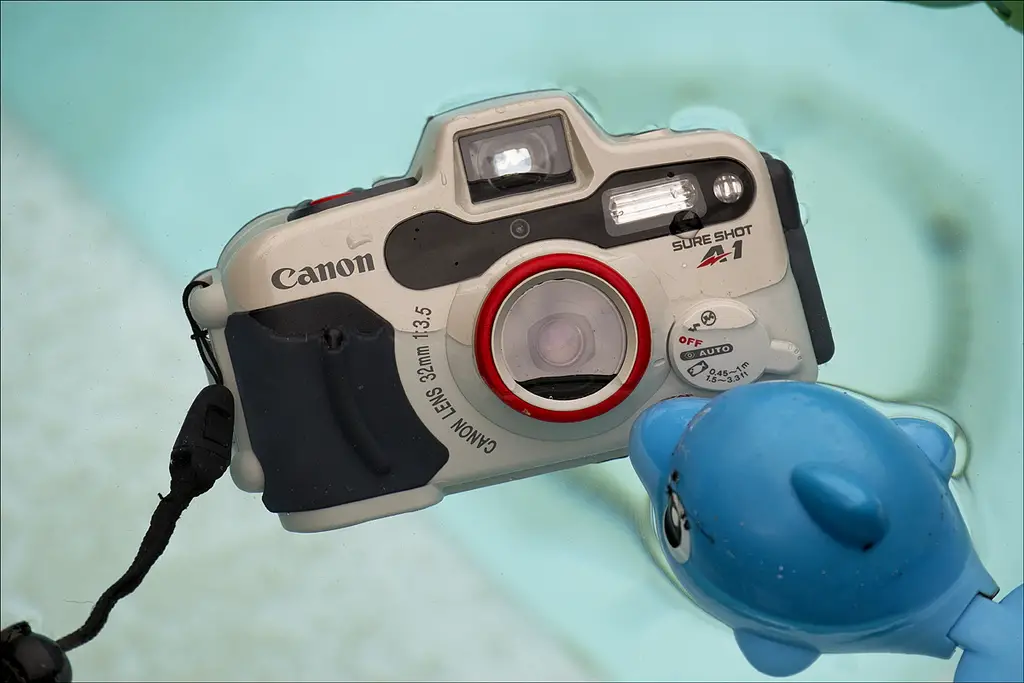








Comments
Ken Hindle-May on Canon Sureshot A1 Review – Underwater fun! – by Chris Dodkin
Comment posted: 03/11/2015
joby on Canon Sureshot A1 Review – Underwater fun! – by Chris Dodkin
Comment posted: 13/02/2016
Phil on Canon Sureshot A1 Review – Underwater fun! – by Chris Dodkin
Comment posted: 02/03/2016
Comment posted: 02/03/2016
Phil on Canon Sureshot A1 Review – Underwater fun! – by Chris Dodkin
Comment posted: 02/03/2016
Also I appreciated your thoughts on the GR1. I have been thinking about a fixed 28-30mm pocketable point and shoot. Right now I'm using a Olympus stylus epic. For the prices people are paying for old cameras its almost worth getting a Ricoh GRIV and taping the screen up and buying multiple memory cards to just keep the same work flow "no chimping"!
Phil on Canon Sureshot A1 Review – Underwater fun! – by Chris Dodkin
Comment posted: 08/03/2016
Patrick on Canon Sureshot A1 Review – Underwater fun! – by Chris Dodkin
Comment posted: 21/03/2017
Comment posted: 21/03/2017
Alan Yahnke on Canon Sureshot A1 Review – Underwater fun! – by Chris Dodkin
Comment posted: 17/07/2017
Alex G on Canon Sureshot A1 Review – Underwater fun! – by Chris Dodkin
Comment posted: 05/07/2018
Steven Grandy on Canon Sureshot A1 Review – Underwater fun! – by Chris Dodkin
Comment posted: 22/01/2019
Anselm on Canon Sureshot A1 Review – Underwater fun! – by Chris Dodkin
Comment posted: 13/01/2023
not sure if the quality control was massively different from factory to factory but some later models may possibly have had some tweaks in terms of waterproofness. as a free diver I have progressed past 5 m and am currently searching for anything more reliable to go deeper
Although it sports a surprisingly good lens I find that it is mainly the subjective visibility that will determine if any of your photos are going to be decent quality. I recently tested Cinestill 800T which was entirely a bad choice as the colours were not be rendered very well and most pics were awful. I was discouraged from trying slide films because of their narrow exposure latitude and impatiently wait for fugufilm 400 which might resolve my main problems.
I recently saw a few interesting although grainy BW from Nikonos but a large majority of photographing divers seem to agree that they are becoming expensive to service of not really difficult...